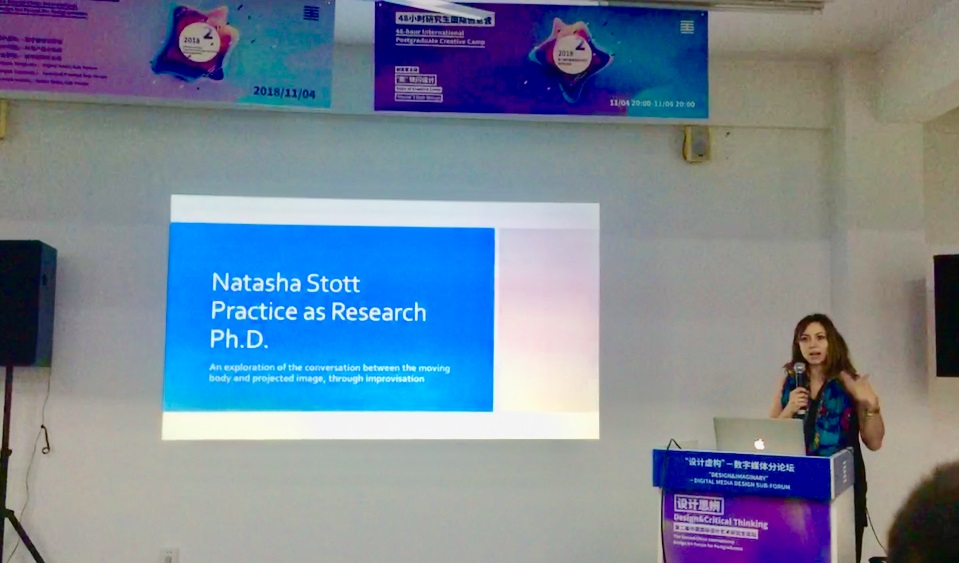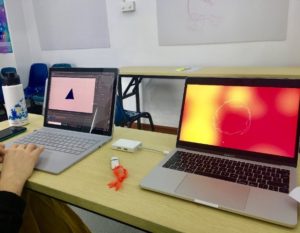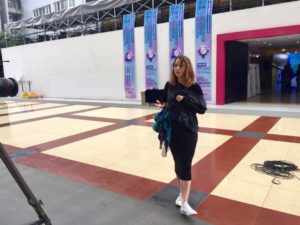I went to deliver my paper, Design in Dance, at the the prestigious China Academy of Art in Shanghai, the most influential academy of fine arts in China.
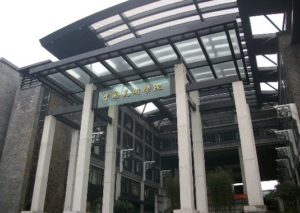
The China Academy of Art was one of the first art academies to set up design majors in the beginning of the 20th century. Its long history witnessed an evolutional development from pattern, to crafts and finally to modern design. The faculty members, both Chinese and foreign, made great contributions to constructing the core curriculum system, with an international vision of both the East and the West, embracing the concepts of modern design theory, and emphasising the combination of art and technology, of talent and innovation and of creativity and economy.
I had to submit a paper to get accepted to the forum. My paper looked at the way design interacts with dance, and how design can affect the performer, the psychology of performance, and the choreography. I wrote about my journey through this, which began in my undergraduate embodied research at Coventry University, which links intrinsically with my PhD: An exploration of the conversation between the moving body and projected image, through improvisation.
My paper accepted, my visa fast-tracked, flights booked, and presentation prepared, I flew to Shanghai via Zurich and arrived early morning, straight to the conference where all the professors from the institute were speaking and were translated live through an earpiece.
On the second day, all post-graduate attendees were split into three sub-forums: fashion & product design, urban space design and digital media design, the latter of which I was in.

My paper, Design in Dance, looks at my journey through my undergraduate experience and interest in urban and unusual environments to create performance, and the potential this has on site-specific dance pieces. It also considers my master’s, and how exoskeletons, multidisciplinary arts practices, creative multiplicity, garment-led performance and the performers’ double/projected-selves interact, and the ontological and logistical questions these bring up.
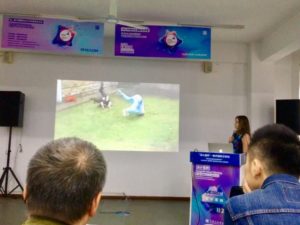
The latter part of my presentation discussed the research and studio practice of my PhD, showing examples of working processes, the challenges faced, the environment created, the equipment and performers involved, the prompts and actions, and the frameworks beginning to develop through my findings.
The third and fourth day was a 48-hour flash design where we split into small groups to collaborate and generate works based on a given theme. The theme of my group, Resilient Convergence, was Home. We got people to answer these questions:
If home was a colour what would it be?
If home was a shape what would it be?
If home was a movement what would it be?
PC to the left (Jess Robins) Mac to the right (Natasha Stott) creating Homeuristic |
The answers informed the making of our visual and audio animation Homeuristic. We worked on a PC and Mac to create the work and recorded audio from outside our room in the Academy, which was the sound of birds singing – a relaxing, unobtrusive soundscape.
Homeuristic was an abstract representation of the feeling of home: a geometric development created using the collected data presented through shapes, colours and motions; a conceptual creation revealed through a perspective of seeing, feeling, needing and knowing.
On day five, the exhibition opened, and the awards ceremony took place. I was very happy to get an award for my presentation – third prize in my category. I was given a framed certificate, and an assortment of gifts including a beautiful large hardback book on the history of The Art Academy, their works, writings and teachings. And I also got an invitation from the Dean to return to teach at the central campus.
The experience was amazing, from the lectures and papers presented to the flash design and awards ceremony! I met some inspiring creative thinkers and academics and I hope to get more opportunities like this in the future.
If you would like to know more about the China Academy of Art please visit http://en.caa.edu.cn/ABOUT/Intro/ also https://en.wikipedia.org/wiki/China_Academy_of_Art

